The key to successful lead generation lies not just in the quantity of leads, but in their quality and the strategy employed to engage them. There’s no one-size-fits-all approach, but there are tried and true principles that we can attempt with fairly predictable levels of reliability.
In this post, we break down many of the lead generation methodologies that everyone should know when starting off or re-approaching their lead generation strategy.
Their expertise has helped Nextiva grow its brand and overall business
First Off, It’s all About Prioritizing Smartly
One of the most significant yet frequently neglected aspects of lead generation is the prioritization of leads.
A critical insight from Kevin Chiu, the co-founder of Catalyst, highlights this point.
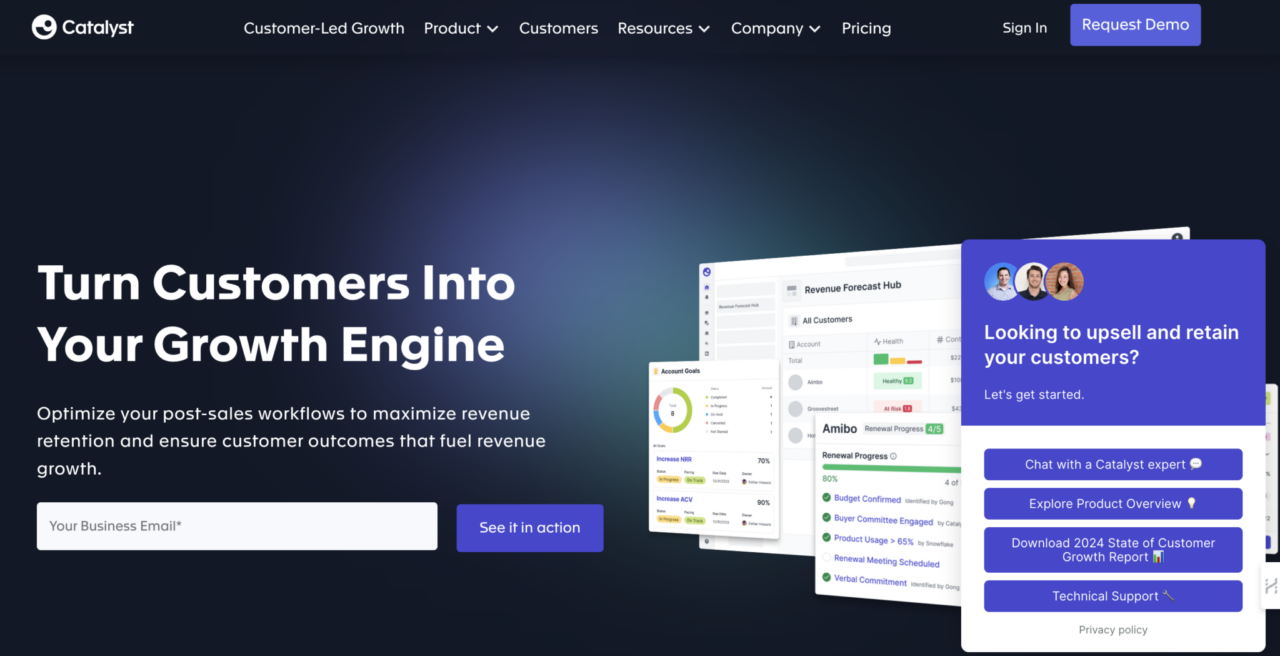
Chiu points out that Sales Development Representatives often find themselves lost in a sea of accounts and contacts, spending excessive time determining whom to approach. This strategy, while common, isn’t the most efficient.
The real power lies in targeting “warm signal leads” from the get-go. This means identifying prospects who are already somewhat engaged or familiar with your brand. These could be leads that have shown interest through marketing qualified leads, past customers who might be interested in repeat business, or active members of your community.
For example, in a case where you receive a cold email that stands out amidst all the noise because it was highly personalized, you might be more apt to engage with it versus a more generic, mass-generated email approach. The trick is also in making the email feel organically written. It shouldn’t be formatted too heavily, and needs to be short, short, short.
This concept extends beyond just identifying warm leads. It’s about understanding the level of their engagement and tailoring your approach accordingly. For example, a lead who frequently interacts with your content or has a history of purchasing might require a different approach than someone who’s just signed up for your newsletter.
Scoring Personalized Leads
To implement this strategy effectively, lead scoring becomes an invaluable tool. By assigning numerical values to various actions or engagement levels of potential leads, businesses can prioritize their outreach efforts.
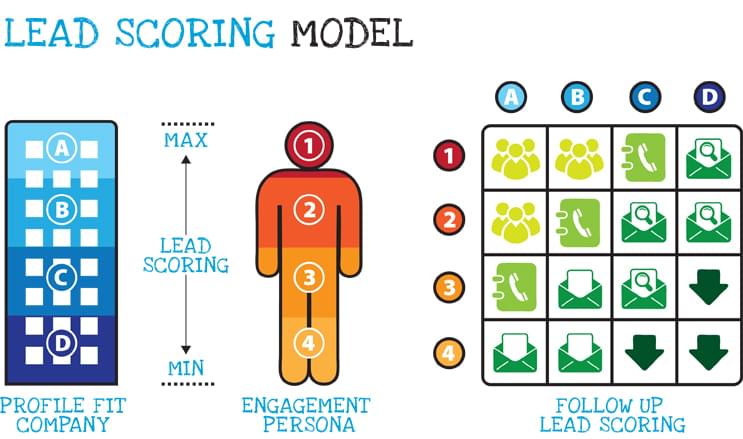
This exercise is incredibly helpful in that the most promising leads are approached first, increasing efficiency and the likelihood of successful conversions.
Examples of Effective Personalization
Personalization can be as simple as referencing a recent download from your website or as complex as tailoring a proposal based on their business’s specific challenges. Whatever it is, it has to be something that bears meaning to the prospect.
Here are a few placements where you can infuse personalization into your strategy:
- Email Campaigns: Tailored emails based on the recipient’s previous interactions with your brand, such as opening previous emails or attending webinars.
- Content Marketing: Creating content that addresses the specific needs or interests of different segments of your audience.
- Social Media Engagement: Interacting with leads on social media platforms in a way that feels genuine and directly relevant to their expressed interests or needs.
Dive Deeper: Best Lead Generation Tactics for Content, Email & Social Media Marketing
The Omnichannel Approach
In the rapidly evolving digital marketing landscape, the omnichannel approach has become a critical strategy for businesses aiming to effectively reach and engage their target audience.
This method is not simply about maintaining a presence across multiple platforms; it’s about ensuring a consistent, integrated user experience that seamlessly connects each touchpoint. The focus is on leveraging data and technology to create a unified brand message that caters to consumers across different channels.
Integrating Channels for a Unified Customer Experience
The essence of the omnichannel strategy lies in its ability to integrate various marketing channels into a cohesive whole:
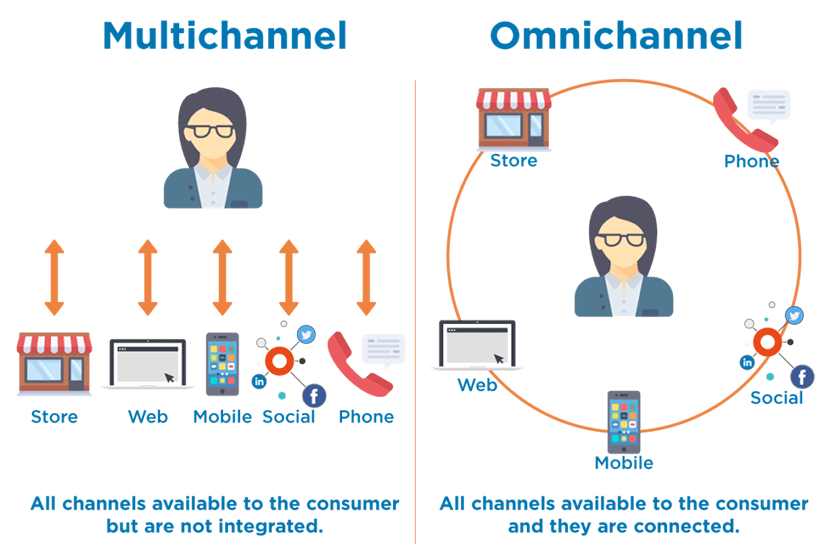
Each platform, from social media to email to online ads, plays a distinct role in the consumer journey, yet they all contribute to a single, harmonized narrative about the brand:
- Data-Driven Insights: Use analytics to gain a comprehensive understanding of customer behavior across channels.
- Channel Synchronization: Make sure that messaging, branding and consumer interactions are consistent and complementary across all platforms.
- Technology Utilization: Employ marketing automation tools to streamline communication and personalize the customer experience at scale.
Adapting to Platform Dynamics and Consumer Expectations
The dynamic nature of digital platforms necessitates a flexible, responsive approach to omnichannel marketing. Changes in platform algorithms, privacy regulations and consumer preferences can significantly impact how businesses engage with their audience.
To that end, staying ahead requires a commitment to ongoing adaptation and optimization. And to reach that level of flexibility, consider these tips:
- Agile Marketing Practices: Be prepared to pivot strategies in response to changing platform policies and consumer trends.
- Customer-Centric Messaging: Tailor communications to meet the evolving needs and expectations of your audience, ensuring relevance and engagement.
- Cross-Platform Analytics: Monitor performance metrics across channels to identify opportunities for improvement and adjust tactics accordingly.
We Use These Applications for Enhanced Lead Generation
Tools like Gong and Apollo are paving the way for smarter lead generation. Let’s look a little further into each of them now.
Gong: AI-Driven Insights for Hot Lead Identification
Gong leverages artificial intelligence to transform sales conversations into actionable insights. This platform analyzes communication with prospects across emails, calls, and meetings to identify patterns that signal a lead’s readiness to buy.
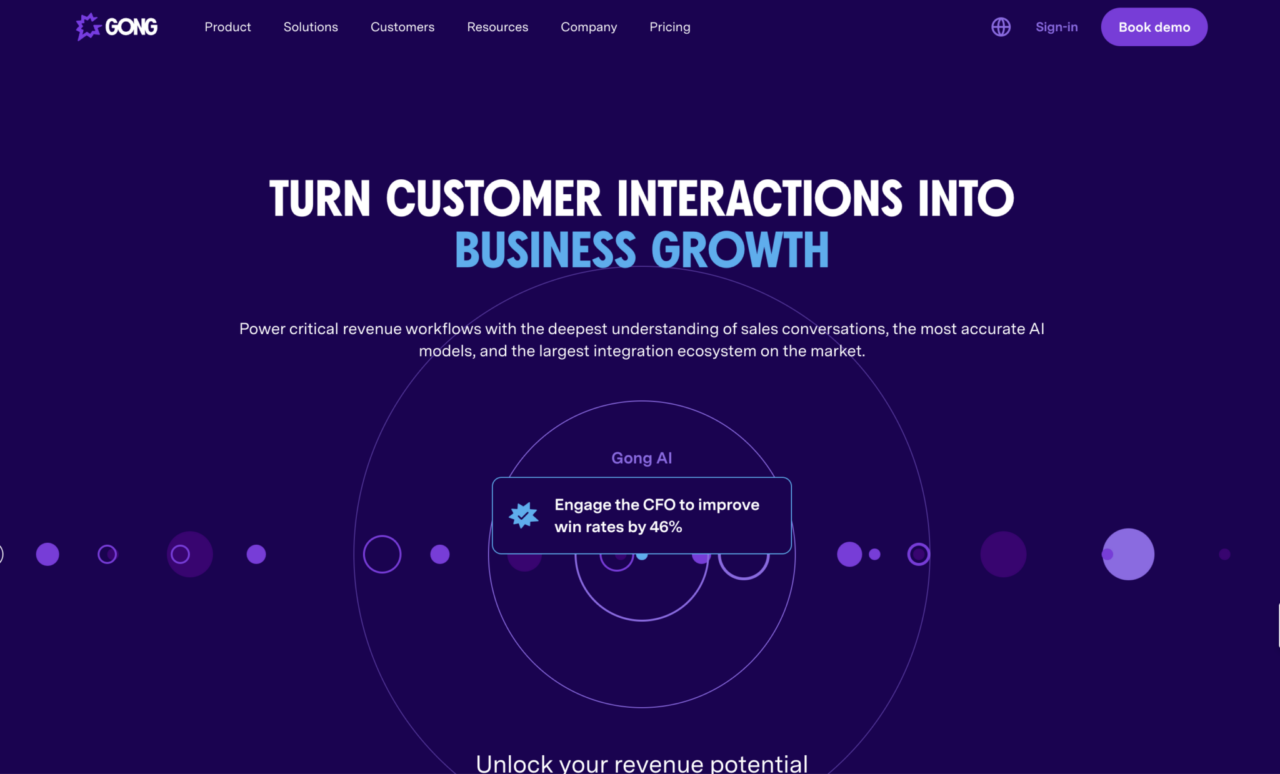
For instance, Gong’s AI capabilities can pinpoint when a prospect’s engagement level spikes, suggesting an increased interest in your product or service. This insight allows sales teams to focus their efforts on the most promising leads. Furthermore, Gong recommends the most relevant stakeholders within a target account, facilitating a tailored account-based marketing approach.
In short, Gong is great at helping identify the right people in a scalable way.
Key Features:
- AI-Driven Analysis: Analyzes sales communications to identify buying signals.
- Stakeholder Identification: Suggests key contacts within accounts for a targeted approach.
- Engagement Insights: Offers real-time insights on prospect engagement levels.
Apollo: Streamlining Lead Generation with Precision
Apollo, on the other hand, is a comprehensive sales intelligence and engagement platform that streamlines the lead generation process. It provides access to a vast database of potential leads, complete with valuable information such as contact details, industry, company size, and more. This wealth of data enables businesses to precisely target their ideal customer profiles.
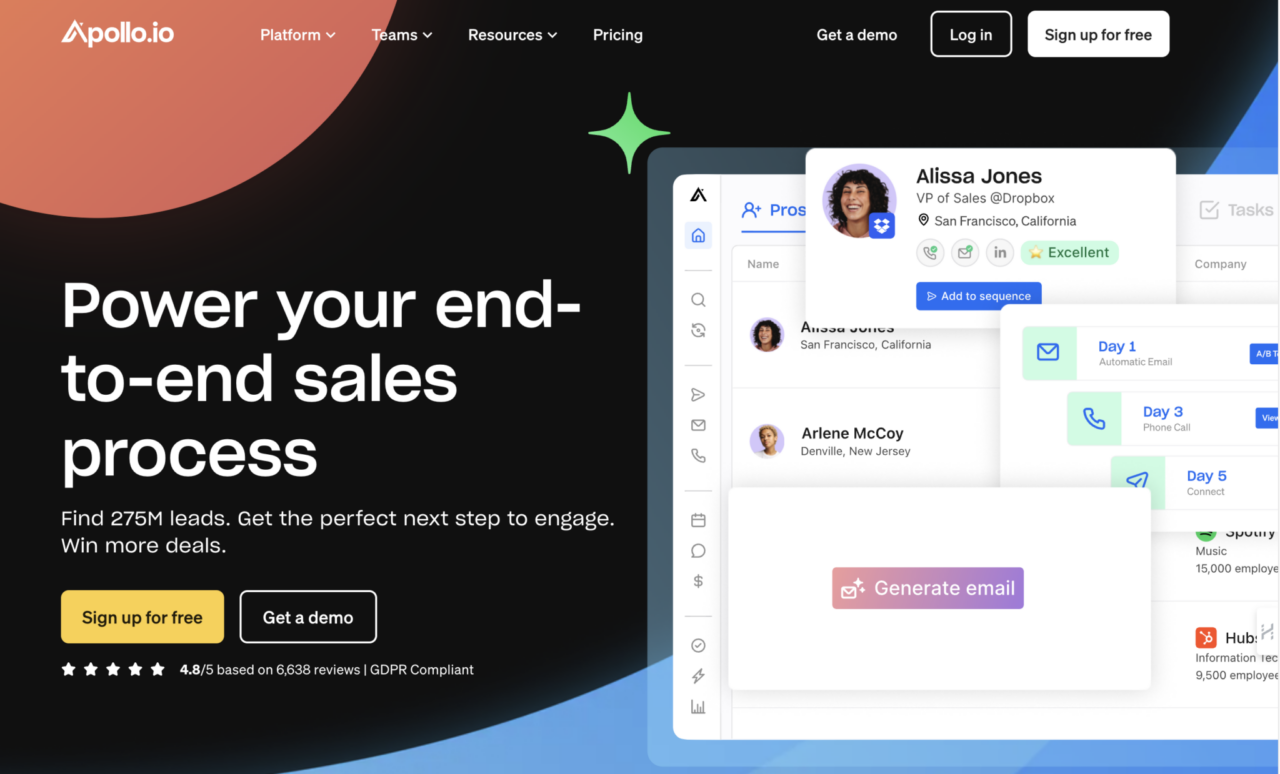
Apollo’s strength lies in its ability to assist sales and marketing teams in crafting personalized communication strategies. Through leveraging data-driven insights, users can create highly customized outreach campaigns that resonate with their audience. Apollo’s platform also includes tools for automating outreach, allowing for more consistent and timely communication with potential leads.
Key Features:
- Rich Lead Database: Offers detailed information on millions of potential leads.
- Customized Outreach: Enables personalized communication strategies based on data insights.
- Automation Tools: Facilitates efficient, automated communication with prospects.
Last Thoughts on Building a Winning Lead Generation Strategy
Looking ahead, the future of lead generation lies in the balance of technology and human insight. As AI and machine learning continue to evolve, their integration into lead generation strategies will become more sophisticated. However, the human element of understanding customer needs and crafting personalized messages will remain irreplaceable.
The essence of a successful lead generation strategy lies in its ability to adapt and evolve. By prioritizing smart lead targeting, embracing technological advancements, and maintaining a human touch in outreach, businesses can navigate the dynamic landscape of sales and marketing with confidence.
Remember, in the world of lead generation, quality trumps quantity, and a thoughtful, personalized approach is the key to unlocking exponential growth.
If you’re ready to level up your sales pipeline, Single Grain’s Lead Gen experts can help!👇
For more insights and lessons about marketing, check out our Marketing School podcast on YouTube.


